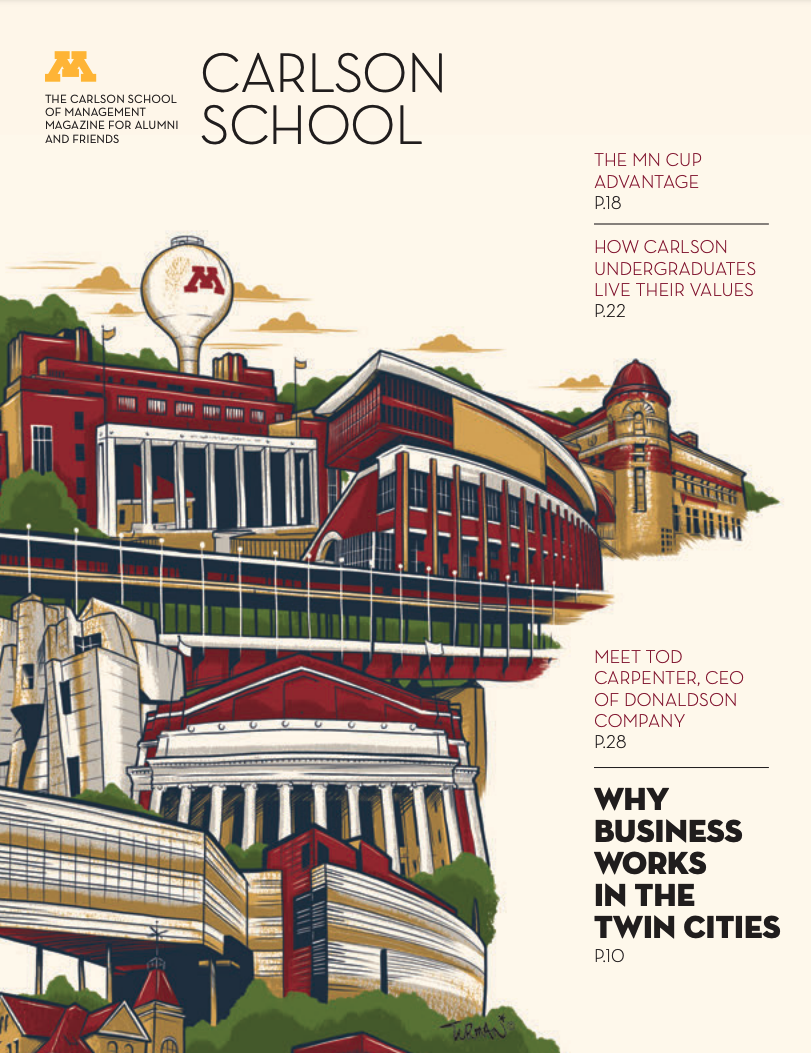
Aaron Sojourner Helps Minneapolis Public Schools Invest in Their Students
Monday, April 8, 2019
“People’s experiences growing up have lifelong consequences,” says Aaron Sojourner.
Sojourner is a labor economist who served with President Obama and Trump’s Council of Economic Advisers in 2016-17. He has worked on issues spanning the entire U.S. labor market, so you might be surprised to hear the economic force he is most concerned about is kids. Or in economic terms, human capital investment.
“If you want to have a community full of productive adults, you need to invest in high-quality experiences for those kids when they’re growing up,” says Sojourner, an associate professor with the Carlson School’s Department of Work and Organizations.
While policymakers debate exactly how and how much to invest in our children, it’s clear early childhood education programs pay off. One popular measure, the Heckman Equation, shows a 13 percent return on such programs.
Improving Student Achievement
Sojourner’s interest in the “sweet spot” where the labor market intersects with human capital investment in education led him to reach out to Minneapolis Public Schools in 2014 to conduct research to help improve student achievement.
“They came to us differently than traditional researchers,” says Maggie Sullivan, chief human resources officer for Minneapolis Public Schools. “They said, ‘Here’s what we’re really interested in looking at. What are your levers for really moving student achievement? What are some of those talent issues or labor issues that we can work on together?’”
From this initial conversation, Sojourner and a team of researchers from the University of Minnesota, as well as St. Catherine University, worked with the district to identify mutual areas of interest. The result was a list of research questions that delved into:
- How to use data to attract the most effective teachers;
- How to recognize the most effective teachers once they applied; and
- How to place and keep these teachers in the schools most in need of their skills and talents.
The Human Resources—University & Minneapolis Public Schools (HR-UMPS) partnership was born. Its purpose: Use data analysis to improve the odds that the best teachers are hired right away, and that those teachers are retained over time.
This data, Sojourner says, will provide answers that could significantly improve student outcomes. The U.S. Department of Education is interested in those answers, too, and in 2016, granted $400,000 to fund the project over two years.
The aim, Sojourner says, is to improve outcomes more quickly in a system where it can sometimes take two or more years to identify teachers who aren’t meeting their students’ needs. That lost time, he says, is costly for the kids and for society.
“It’s a very expensive way to learn,” he says. “The kids never get those years back, and that has a big influence on their development and their life.”
“If you want to have a community full of productive adults, you need to invest in high-quality experiences for those kids when they’re growing up."
How It Works
To identify traits that correlate with the most effective, longest-serving educators, researchers compared data points from more than 16,000 applicant resumes to performance data from about 2,000 hired teachers.
By leveraging the U.S. Department of Labor’s Occupational Information Network to analyze applicant experience, researchers were provided an assessment of the relevance of applicants’ experience to the role for which they were applying. Comparing these findings to a teacher’s eventual performance reviews and student outcomes, the team identified traits that predict the most effective, longest-serving educators.
“Hiring is always done with incomplete information, but this can add reliable signals of who's going to be most effective," says Sojourner, noting a few surprises along the way. "Like, spelling accuracy [on resumes] turns out not to be a good predictor for whether kids will learn more math and reading from a hire.”
It’s not a replacement for the human-centered hiring process, Sojourner says. Instead, it’s a tool for hiring managers to use as they review applications.
“This project has drawn on a particular Carlson School strength as a place for practical, interdisciplinary management excellence,” says Sojourner. University of British Columbia Sauder School of Business Assistant Professor Sima Sajjadiani led this resume analysis project, which she started as a Carlson doctoral student. Carlson Professor John Kammeyer-Mueller and Associate Professor Elton Mykerezi from Applied Economics at the UMN also co-authored the paper.
High Stakes for the Community
For Minneapolis Public Schools, the process has been illuminating.
“We started to ask these questions and realized we needed to build new data systems and then we needed to integrate those data systems,” Sullivan says.
Innovative work like the HR-UMPS partnership is challenging but important, Sullivan says, one with high stakes that helps address long-standing racial and economic disparities.
“How we do at supporting our students right now has long-lasting impacts for our community and our democracy,” she says. “I think part of this work is a deep commitment by the district to continue to get better at addressing those disparities in all aspects of our work, and talent is one of those big levers.”
A willingness to step back, reflect, and make a new kind of investment has always been a part of the culture in the Twin Cities, Sojourner says.
“I think the secret to the Twin Cities’ success is that we understand that our people drive the health of our community,” he says. “You invest in our people and they go on to invent, and create, and build.”
